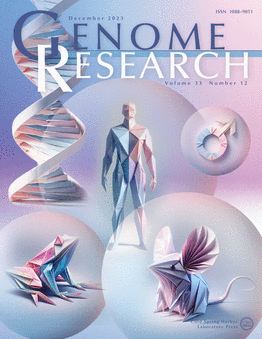聚集的ret3 RNA-seq数据提高了共识和组织特异性基因共表达网络的推断
IF 5.5
2区 生物学
Q1 BIOCHEMISTRY & MOLECULAR BIOLOGY
引用次数: 0
摘要
基因共表达网络(GCNs)描述了维持细胞身份和体内平衡的基因之间的关系。然而,典型的RNA-seq实验往往缺乏足够的样本量来进行可靠的GCN推断。recot3是一个包含316,443个处理过的人类RNA-seq样本的数据集,为改进网络重建提供了机会。然而,从公共数据推断GCN受到混杂因素和不一致标签的挑战。为了解决这个问题,我们开发了一个管道来根据细胞类型组成对样本进行注释。通过比较聚合策略,我们发现回归研究中的混杂因素和优先考虑大型研究优化了网络重建。我们应用这些发现来推断三个共识网络(普遍的,癌症的,非癌症的)和27个特定环境的网络。共识网络中的中心基因丰富了进化受限的基因和普遍存在的生物途径,而环境特异性中心节点包括组织特异性转录因子。数据聚合增加的统计能力有助于从上下文特定网络中推导出变异注释,这些注释显著丰富了复杂性状的遗传力,与基线功能基因组注释的重叠无关。虽然数据聚合导致了持续对数似然的严格增加,但我们观察到边际改善逐渐减少,这表明整合互补模式,如Hi-C和ChIP-seq,可以进一步完善网络重建。我们的方法概述了GCN推理的最佳实践,并强调了数据聚合的优点和局限性。本文章由计算机程序翻译,如有差异,请以英文原文为准。
Aggregation of recount3 RNA-seq data improves inference of consensus and tissue-specific gene coexpression networks
Gene coexpression networks (GCNs) describe relationships among genes that maintain cellular identity and homeostasis. However, typical RNA-seq experiments often lack sufficient sample sizes for reliable GCN inference. Recount3, a dataset with 316,443 processed human RNA-seq samples, provides an opportunity to improve network reconstruction. However, GCN inference from public data is challenged by confounders and inconsistent labeling. To address this, we developed a pipeline to annotate samples based on cell type composition. By comparing aggregation strategies, we found that regressing confounders within studies and prioritizing larger studies optimized network reconstruction. We applied these findings to infer three consensus networks (universal, cancer, non-cancer) and 27 context-specific networks. Central genes in consensus networks were enriched for evolutionarily constrained genes and ubiquitous biological pathways, while context-specific central nodes included tissue-specific transcription factors. The increased statistical power from data aggregation facilitated the derivation of variant annotations from context-specific networks, which were significantly enriched for complex-trait heritability independent of overlap with baseline functional genomic annotations. While data aggregation led to strictly increasing held-out log-likelihood, we observed diminishing marginal improvements, suggesting that integrating complementary modalities, such as Hi-C and ChIP-seq, could further refine network reconstruction. Our approach outlines best practices for GCN inference and highlights both the strengths and limitations of data aggregation.
求助全文
通过发布文献求助,成功后即可免费获取论文全文。
去求助
来源期刊

Genome research
生物-生化与分子生物学
CiteScore
12.40
自引率
1.40%
发文量
140
审稿时长
6 months
期刊介绍:
Launched in 1995, Genome Research is an international, continuously published, peer-reviewed journal that focuses on research that provides novel insights into the genome biology of all organisms, including advances in genomic medicine.
Among the topics considered by the journal are genome structure and function, comparative genomics, molecular evolution, genome-scale quantitative and population genetics, proteomics, epigenomics, and systems biology. The journal also features exciting gene discoveries and reports of cutting-edge computational biology and high-throughput methodologies.
New data in these areas are published as research papers, or methods and resource reports that provide novel information on technologies or tools that will be of interest to a broad readership. Complete data sets are presented electronically on the journal''s web site where appropriate. The journal also provides Reviews, Perspectives, and Insight/Outlook articles, which present commentary on the latest advances published both here and elsewhere, placing such progress in its broader biological context.
 求助内容:
求助内容: 应助结果提醒方式:
应助结果提醒方式:


